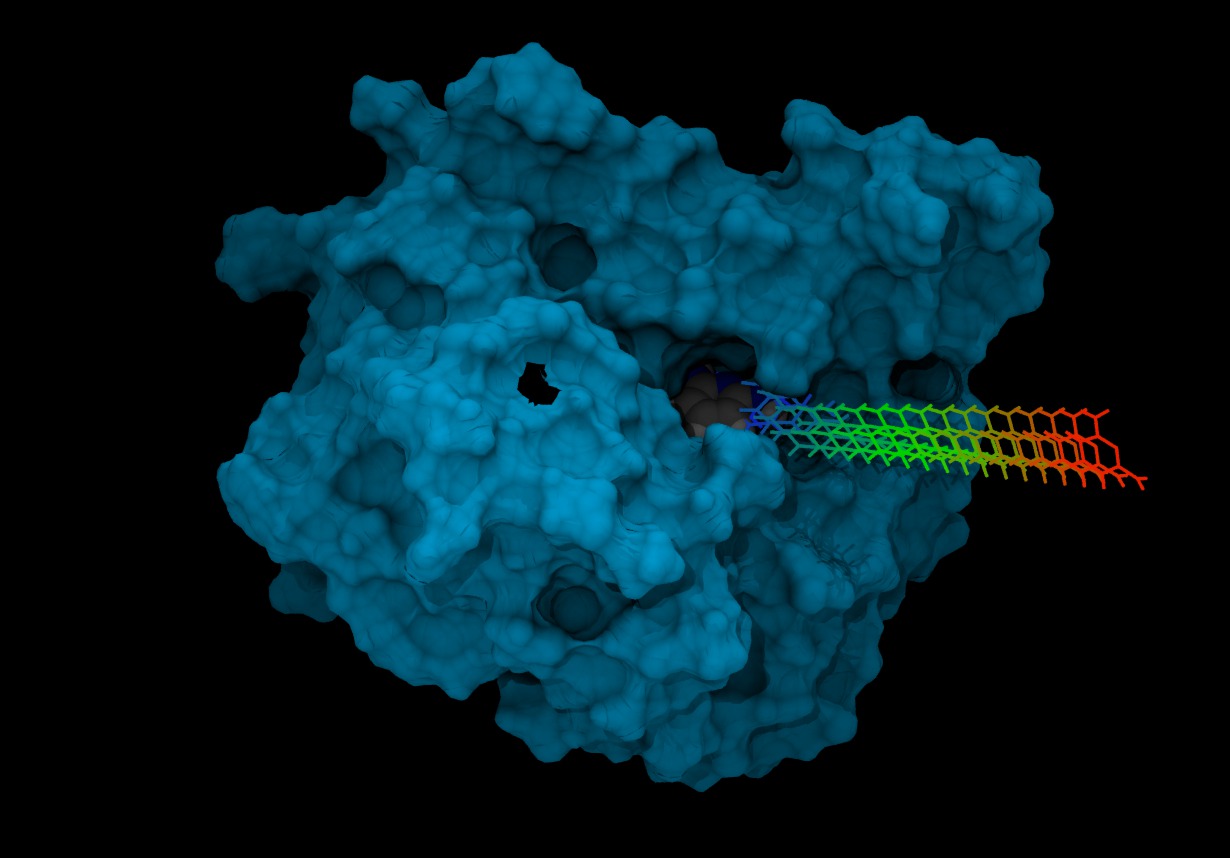With the development of large-scale computing facilities, simulations of materials at the molecular scale are now performed on a daily basis. The aim of these simulations is to understand the macroscopic properties of matter from a microscopic description, for example, its atomistic configuration.
Let us give a few examples. In materials science, it is now possible to simulate the dynamics of defects in a crystallin lattice, which is a fundamental mechanism to understand the ageing of nuclear reactor. In biological sciences, the simulation of the interaction between a protein and a ligand is crucial to predict the influence of the ligand on the behavior of the protein, with applications to drug design for example. The computer can thus be used as a “numerical microscope” in order to access data that would be very difficult and costly to obtain experimentally.
In order to make these simulations efficient and precise, mathematics have a crucial role to play. Indeed, specific algorithms have to be used in order to bridge the time and space scales between the atomistic level and the macroscopic level. The objective of the MSMath ERC project is thus to develop and study efficient algorithms to simulate high-dimensional systems over very long times. These developments are done in collaboration with physicists, chemists and biologists who are using these numerical methods in an academic or industrial context.
In particular, we are developping mathematical tools at the interface between the analysis of partial differential equations and stochastic analysis in order to characterize and to quantify the metastability of stochastic processes. Metastability is a fundamental concept to understand the timescale separation between the microscopic model and the macroscopic world. Many algorithms which aim at bridging the timescales are built using this timescale separation.
Composition of the team
The team of the MSMath ERC project consists of four permanent researchers, in addition to Tony Lelièvre (PI): Virginie Ehrlacher, Frédéric Legoll and Gabriel Stoltz at Ecole des Ponts, and Mathias Rousset who recently moved to IRISA (Rennes). Many researchers from CERMICS and the Matherials research team are also involved in some projects related to the ERC project, in particular Benjamin Jourdain and Julien Reygner. Moreover, the project relies on many collaborations with external researchers: mathematicians (David Aristoff, Charles-Edouard Bréhier, Frédéric Cérou, Gersende Fort, Arnaud Guyader, Dorian Le Peutrec, Francis Nier, Stefano Olla, Grigoris Pavliotis, Giovanni Samaey, Gideon Simpson, Wei Zhang, Pierre-André Zitt, …), physicists and chemists (Arthur Voter and Danny Perez from Los Alamos National Laboratory ; Chris Chipot and Jérôme Hénin from CNRS, see the webpage of the LIA ; researchers from the NAMD group at Urbana Champaign (University of Illinois) and engineers from CEA and SANOFI (Manuel Athènes, Marc Bianciotto, Eric Dumonteil, Cosmin Marinica, Hervé Minoux).
The team also involve PhD students and post-docs. Two post-docs and two PhD students have been hired on the project: Giacomo di Gesu, Florian Angeletti, Boris Nectoux and Laura Silva Lopès. Moreover, the following PhD students and post-docs are also working on themes related to the MSMath project: Manon Baudel, Zineb Belkacemi, Mohamed Blel, Qiming Du, Gérôme Faure, Grégoire Ferré, Florent Hédin, Ahmed-Amine Homman, Henri Louvin, Lise Maurin, Pierre Monmarché, Mouad Ramil, Julien Roussel, Inass Sekkat and Upanshu Sharma.
 Diffusion of adatoms on a surface (courtesy of A. Voter) |
 Successive positions of a ligand leaving the pocket of a protein (system Diaminopyridine-HSP90) (courtesy of SANOFI and C. Mayne) |
